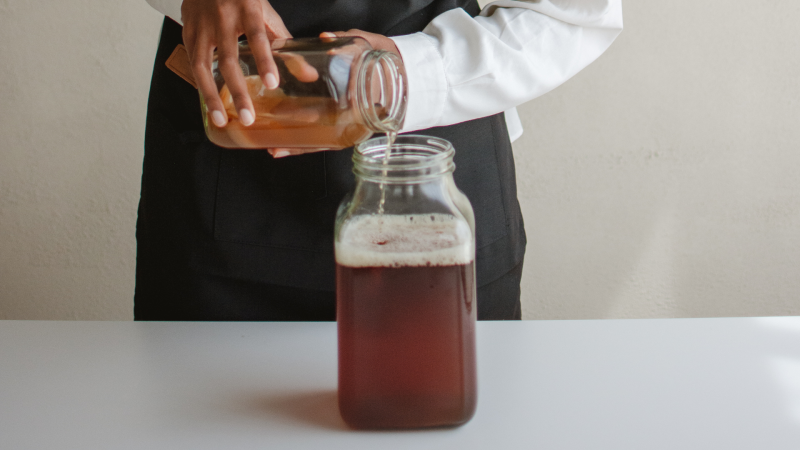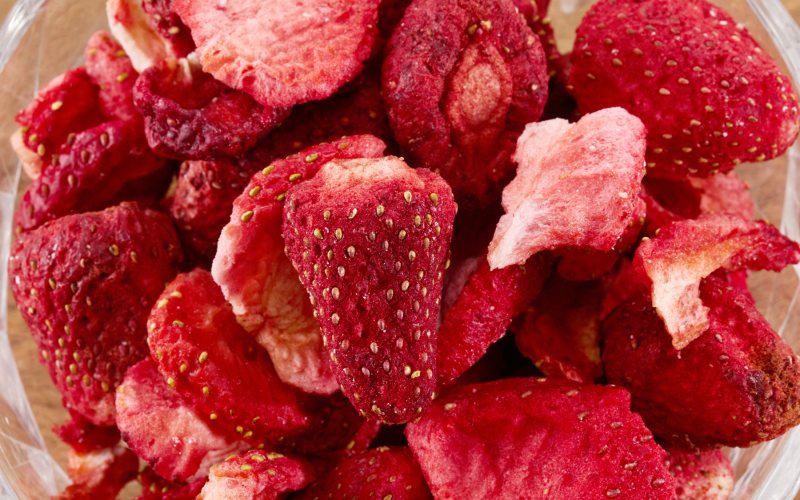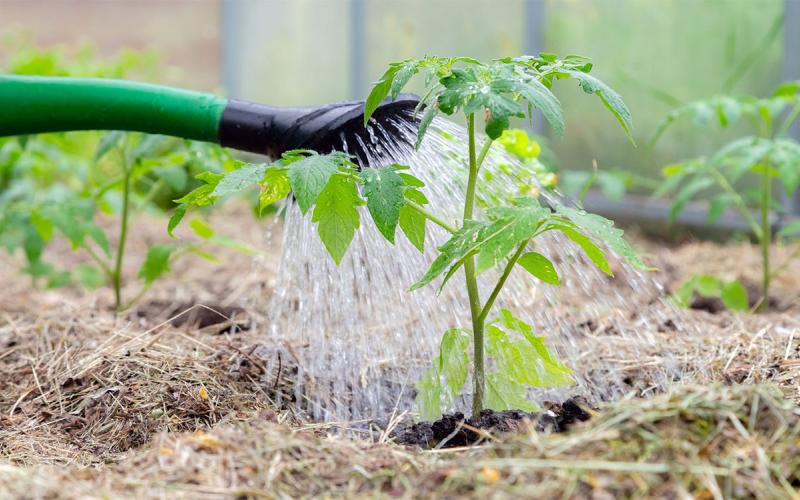Cold brewed teas are a relatively new type of drink. These types of drinks have gained interest as the brewer can choose their own combination of leaves and flavors to make a cold brewed tea that is customized to suit the brewer’s or consumer’s flavor preference. There has not been a lot of industry guidance in terms of addressing how to make a safe cold brew tea, so this article will address the food safety concerns associated with this product and process and how to adequately address these concerns.
Tea Manufacturing Process and Hazards

It is first good to have a general overview of how tea is processed to understand the manufacturing steps and risks with tea. A general over of the process of how tea is processed includes the following steps.
- Harvesting – Tea can be either harvested by hand or mechanically depending on the tea variety. Manual harvesting involves employees harvesting by hand whereas mechanical harvesting involves utilizing equipment that will cut the leaf off the bush and collect it in a storage container
- Withering – Tea leaves are brought to the factory where they are placed in withering troughs which fan hot air to reduce the moisture content of the tea leaf. This process can last for 6 hours and not only reduces moisture content but also breaks down the tea leaf to smaller molecules and increases amino acids and flavor compounds
- Rolling – This step breaks up the leaf cells and mix up the chemical components of the leaf in a roller which applies pressure on the leaf in stages using a rolling motion
- Fermentation – The leaf is spread out on an even surface and left to undergo oxidization/fermentation. This oxidation/fermentation allows chemical reactions to take place and contributes to the formation of some flavor compounds
- Drying – This process removes most of the leaf moisture and stops fermentation by destroying the enzymes.
- Sifting/Sorting/Grading – The dried tea leaves are sorted into particle sizes by going through a sifter and then are sifted through different meshes to get the desired grade
- Packaging – The teas are then placed into the desired package as loose leaf or a tea bag
Since the tea leaves are grown in an agricultural setting, the risk of biological contamination is certainly a risk as animals and humans could act as vectors for pathogen contamination and many pathogens are found readily in the environment. Although there could potentially be a pathogen reduction step in the drying step to remove moisture, this is not a guarantee that all pathogens cells such as salmonella, e. coli, or listeria monocytogenes have undergone a validated kill or rather, a 4 to 5 log reduction. In an analysis of the total microbiological load in different steps in the tea processing, a study showed that there was a reduction of pathogens at different points sampled in the process, but nothing exceeding a 1 log kill. PDA (Potato Dextrose Agar) and SDA (Sabouraud Dextrose Agar) were used for cultivation and enumeration of microbial growth with the enumeration given in CFU (Colony Forming Unit) at different points in the process:
- Nursery - ~120 CFU PDA, ~115 CFU SDA
- Matured Field - ~120 CFU PDA, ~115 CFU SDA
- Withering and Rolling - ~75 CFU PDA, ~80 CFU SDA
- Fermentation - ~85 CFU PDA, ~80 CFU SDA
- Drying - ~40 CFU PDA, ~40 CFU SDA
- Storage - ~20 CFU PDA, ~20 CFU SDA
Thus, if there is contamination in the supply chain, there would not be a guaranteed kill step to reduce or eliminate pathogens to an acceptable level. In addition to pathogen risks such as salmonella, listeria monocytogenes, and e. coli, there is also the risk of clostridium botulinum which could produce grow and produce a heat stable toxin given the right environment such as an anaerobic environment (<2% oxygen) and a pH >4.6. In 2017 there was a major recall conducted in 2017 by Death Wish Coffee. Death Wish Coffee was selling nitrogen-infused cold brew coffee product in reduced-oxygen-packaging (sealed cans) labeled, “Please Keep Refrigerated.” There was no heat treatment of the product during manufacture and there was a potential for clostridium botulinum growth as refrigeration was the sole barrier.
There are other hazards that could be present in tea such as chemical and physical hazards. The chemical hazards could include mycotoxins, pesticide residues, and polycyclic aromatic hydrocarbons from the drying and roasting process. Physical hazards could include metal, rocks, and other vegetative materials. These hazards may be less likely to occur but should be accounted for when evaluating the safety of cold brewed coffee.
Cold Brew Process and Product Characteristics
The cold brew process is a relatively simple process. This process includes taking either loose leaf tea or tea in a sachet or bag and putting in a water pitcher or container in refrigerated temperatures for 6 to 12 hours. Finally, the loose leaf is strained out with only the tea infused solution remaining or the sachet or tea bag is removed.
The pH of tea can range by the type of tea that is used. Black tea can have a pH of 4.9-5.5 green tea 7-10, lemon tea 3, and blackberry 2-3. Factors that can affect the pH of tea include the steeping time, the dilution of tea and additives that can change the pH (ex. Citrus which is more acidic or milk which is more basic.
Heat Processing Options
Without knowing whether the tea leaves have been treated to reduce or eliminate pathogens to a safe level, a processor should take steps to pasteurize or heat treat the tea solution. With a cold brew tea, processors may have reservation of heat treating because of fear of the impact in taste or the nutrition profile. With that being noted, there are a couple heat treatment options proposed using Combase, a microbiological modeling system to evaluate what time and temperature combinations could be utilized to deliver a 5 log kill step with a theoretical pH of 7 and water activity of 0.99.
- Temperature of 145F for 2 minutes and 30 seconds will deliver a 5 log kill for salmonella, listeria, and e. coli
- Temperature of 161F for 1 minute will deliver a 5 log kill for salmonella, listeria, and e. coli
Once the tea leaves have been added to water the entire solution should not be left to sit at ambient temperatures as there could be bacterial growth at ambient temperatures. Therefore, the tea must be brought up to the temperatures and times listed above immediately and then refrigerated to <40F.
Packaging, Container, and Temperature Considerations
The container used to store the tea should be cleaned and sanitized prior to use and should be in good sanitary condition. Good sanitary condition would include the container being hard/scratch resistant and all areas of the container being cleanable. Tea containers that are stained or scratched, can leave niches which are not easily cleaned/sanitized and can become harborage points for bacterial growth. Additionally, the storage container used to steep the tea should not be anaerobically sealed such as vacuum sealing, water bath canning, or pressure canning as the lack of oxygen and a pH >4.6 could contribute to clostridium botulinum growth and thus, toxin production. Lastly, once the loose leaf or sachet or tea bag has been added to water, the solution should be heated immediately and once temperature has been reached, the tea should be immediately refrigerated to <40F. The tea should remain under constant refrigeration (<40F) in storage, transportation, and place of sale.
Selling Cold Brewed Teas in South Dakota
Currently, there are no laws or regulations governing the sale of cold brewed teas to Farmers Markets. However, if a processor chooses to sell the cold brewed teas to a Farmers Market, it would be advised that the Farmers Market Manager have the cold brewed tea processor follow the above-mentioned heat process. Additionally, cold brewed teas would not be a product that would be allowed to be sold out of one’s residence as it doesn’t meet the criteria in HB1322 of 34-18-35 or 34-18-36.
Conclusion
Cold brewed teas are a newer type of drink that is gaining interest. When considering making cold brewed teas, it is important to consider the hazards associated with these types of drinks and the steps that can be followed to ensure they’re safe.


